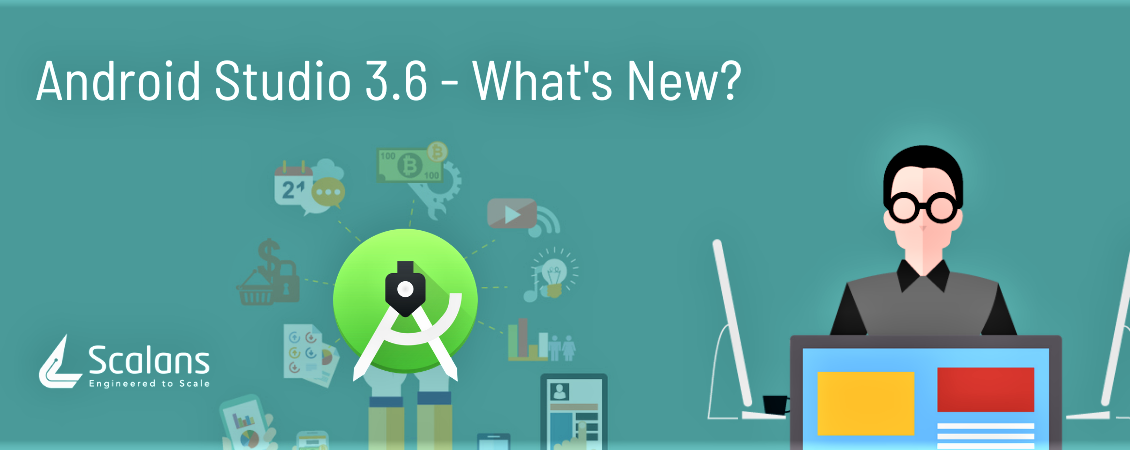
What is new in Android 3.6?
Recently, Google released the latest version of its official IDE used for Android app development – Android Studio 3.6. It comes with some new, as well as, enhanced features targeted to improve code quality and to boost developer productivity.
Here, we’ve collated 5 such best features of Android Studio 3.6 that will ultimately help build strikingly awesome mobile apps.
- Split View
The Preview window present in earlier versions has been replaced by the Split view in v3.6. Incorporated into Design editors like Navigation and Layout editors, this feature allows developers to see the code and the corresponding UI design side-by-side, at the same time.
The main upside of Split view is that it preserves the state of each file (for example, zoom level) while switching between different editors. This is in contrast to the Preview mode that resets the state of a file during switching.
- View Binding
Unlike Data binding, where layouts are bound with data in XML, View Binding binds views defined in an XML layout to a generated class; i.e; with the help of this feature, a binding class is created for every XML layout file.
The advantage of View Binding is that compile-time safety is ensured while referencing views in the code. Thus, all views with an ID can be referenced without any chances of class cast exceptions or null pointer.
- Google Maps UI
In v3.6, Google Maps UI has been embedded into the extended control menu of Android Emulator 29.2.12, in order to connect with the location of the emulated device.
Thus, virtual locations can be specified and routes can be created and streamed in real-time. This comes as a big relief for developers, who earlier had to type in the GPS coordinates to test app location features.
- Multi-display Support
With the rising trend of smartphones having foldable screens, there is a need to optimize apps for such foldable devices.
Android Emulator 29.1.10 offers initial support for multiple virtual displays; it can be configured via Settings menu in the Extended Controls panel. Thus, developers can build and test apps for multi-display devices like foldable smartphones.
- Memory Leak Detection
The Memory Profiler is provided with an option to detect any leaks in the Activity or Fragment instances, thus enabling easier app optimization and eliminating the chances of app crashes.
To do this, first import or capture a heap dump file into the Profiler and select the Activity/Fragment Leaks checkbox shown in the Heap Dump pane. In this way, profiling data having leaking memory can be filtered.
Conclusion
Some other features include a resource tab for color picker, Zipflinger – a new packaging tool, and updates in Android NDK, IntelliJ Platform, Android Gradle Plugin, etc.
Android Studio 3.6, with all these robust features, looks really promising; so if you have an app idea for your product, hire Android app developers and elevate your business to greater heights.



